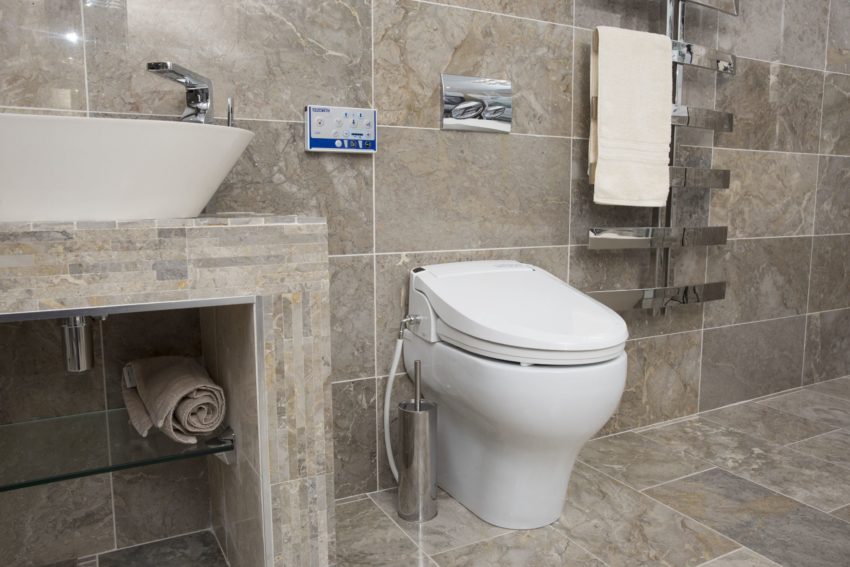Disabled Toilet Alarm Cords: Why You Shouldn’t Tie Them Up

A disabled toilet alarm is a long red pull cord found in accessible toilets that can be used to ask for help in an emergency. So why are they needed, and what happens when they are tied up?
Why are disabled toilet alarm cords important?
A disabled toilet alarm system is required in all disabled toilets. Disabled toilet alarms are for emergencies, such as when a disabled person has slipped and fallen and needs help to get to their feet. The alarm is connected to an outside source (often to the building’s reception area, or to the security team). A person in need of help can pull on the long red cord and know that someone is on their way to assist them.
Why disabled toilet alarms should always reach the floor
It is quite common to find that disabled toilet alarms have been tied in a knot to keep them up off the floor. This can cause problems if the toilet occupant has fallen and is unable to get up off the floor. Equally, wheelchair users may be unable to reach the cord if it is tied up.
In an emergency when someone needs to call for help, a tied-up cord can pose a serious hazard. This means it is crucial to ensure that the disabled toilet alarm is at least touching the floor. Ideally, the cord should trail across the floor to make it as easy as possible for a person to reach the cord, should they need it.
If disabled toilet cords are lifted for cleaning, they should always be put back down before the toilet is re-opened for use. It may not look as neat and tidy untied as it might tied up, but the needs of disabled people must be prioritised. This helps to keep the toilet safe and usable.
Tips on disabled toilet alarm requirements
If you have never installed or needed to use a disabled toilet alarm cord, you might not be aware of how or why it works. We’ve answered a few common questions here.
Why is the cord red?
The ceiling pull cord for the disabled toilet alarm should be easily noticeable, and in many countries the cord must be coloured red to meet regulatory standards. From an accessibility point of view, a brightly coloured red cord for disabled toilets that has a good contrast with the wall, ceiling and floor colours helps make it easier for people with a visual impairment to find the cord in an emergency.
What are the triangle pull handles for?
The alarm cord must be easily reachable from the toilet and floor area. The cords have two large, triangle-shaped pull handles that can be easily grabbed. These handles offer a better grip for users than a cord alone would. This is important, for example, for anyone who has limited fine motor skills or dexterity, who may struggle to grip a thin cord.
The red triangle bangles should be reachable from the ground and from the toilet. This means one of the handles must hang 1000mm from the floor, and the other should hang at 100mm from the floor. Having one close to the ground helps ensure that it’s always within arm’s reach. The other higher handle can be reached when sitting on the toilet, or from another seated position such as in a wheelchair.
Why the alarm sound should be distinct
Once the disabled toilet alarm has been pulled, the toilet’s occupant should be able to hear and see that the alarm has been activated. This lets them know it is working and that help is on its way. A combined audible and visual alarm signal will also make it accessible to people with visual or hearing impairments.
The disabled toilet alarm should also sound different from other alarms in the building, such as the fire alarm. This will help ensure that both the toilet occupant and staff can quickly identify the source of the alarm. Any visual markers for the alarm, such as a flashing light, should also be easily seen and heard by staff so that they can respond quickly.
Why you should have an accessible reset button
There should be a ‘reset’ button inside the toilet cubicle that all occupants, including wheelchair users, can reach. The occupant can then reset the alarm if it was activated by mistake, or if they no longer need help.
Why you should keep disabled toilet alarms unravelled
To make sure disabled toilet alarm cords are always untied and reach the floor, many organisations are distributing signs which can be attached to the alarm’s cord. For example, Scottish charity Euan’s Guide offers free cards that remind people to leave emergency red cords hanging freely to the floor. Reminders like this help to tackle the widespread problem of tied up disabled toilet alarm cords that prevent people from asking for help when they need it.
Find out more about making the built environment more accessible
The disabled toilet alarm system is a lifeline for anyone who finds themselves in a moment of need. Being able to get help and assistance can make the difference between being able to access a venue or not, which is why they should always be reachable – even if the user is stuck on the floor. Would you like to find out more about making your environment more accessible? Read our ‘Disabled toilet accessories to help with care’ article for more tips on accessible toilets, or find out about how smartphone apps can improve the lives of disabled people here. If you enjoy our content, sign up to the Invacare Newsletter by entering your email address in the input box at the top of this article.







